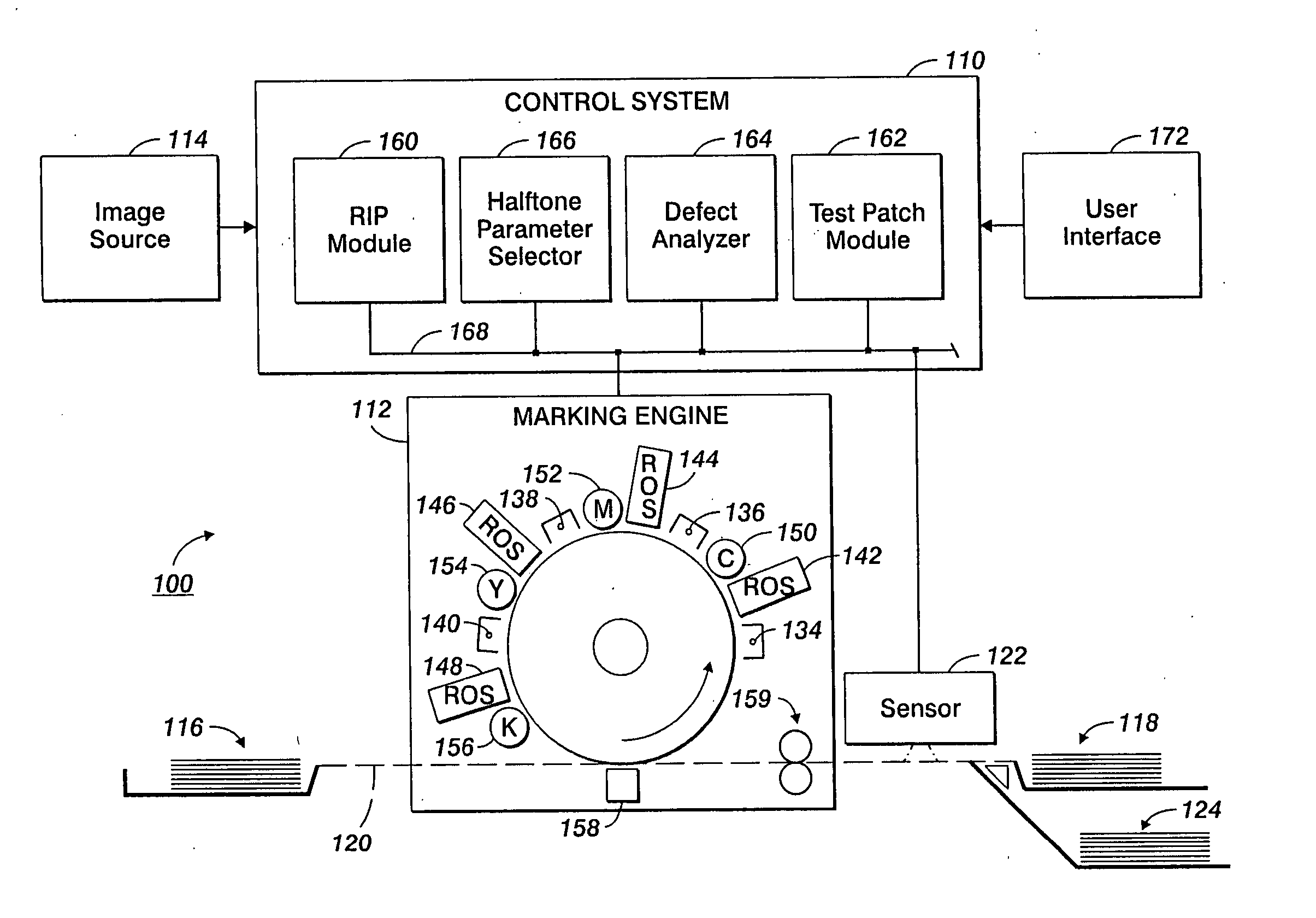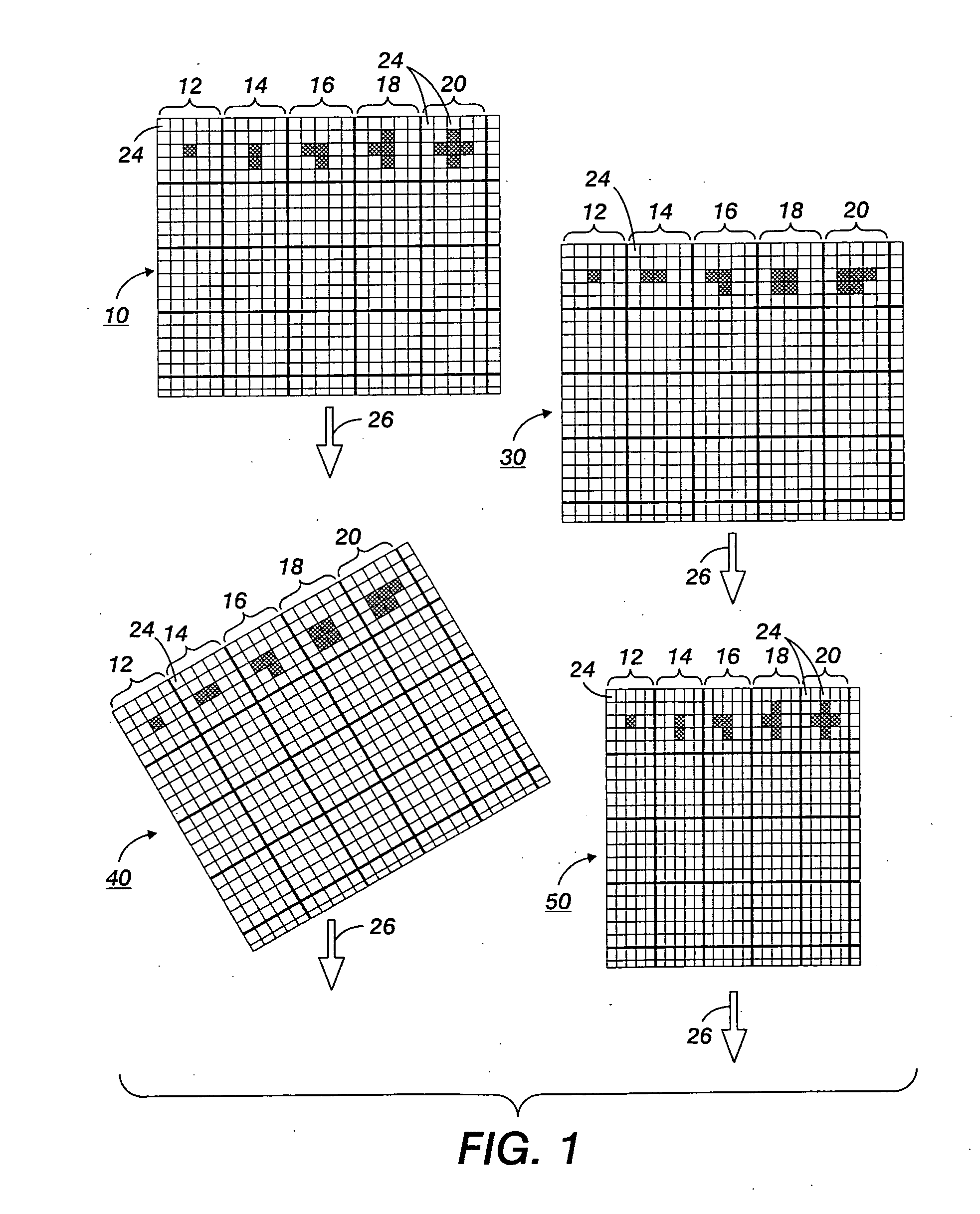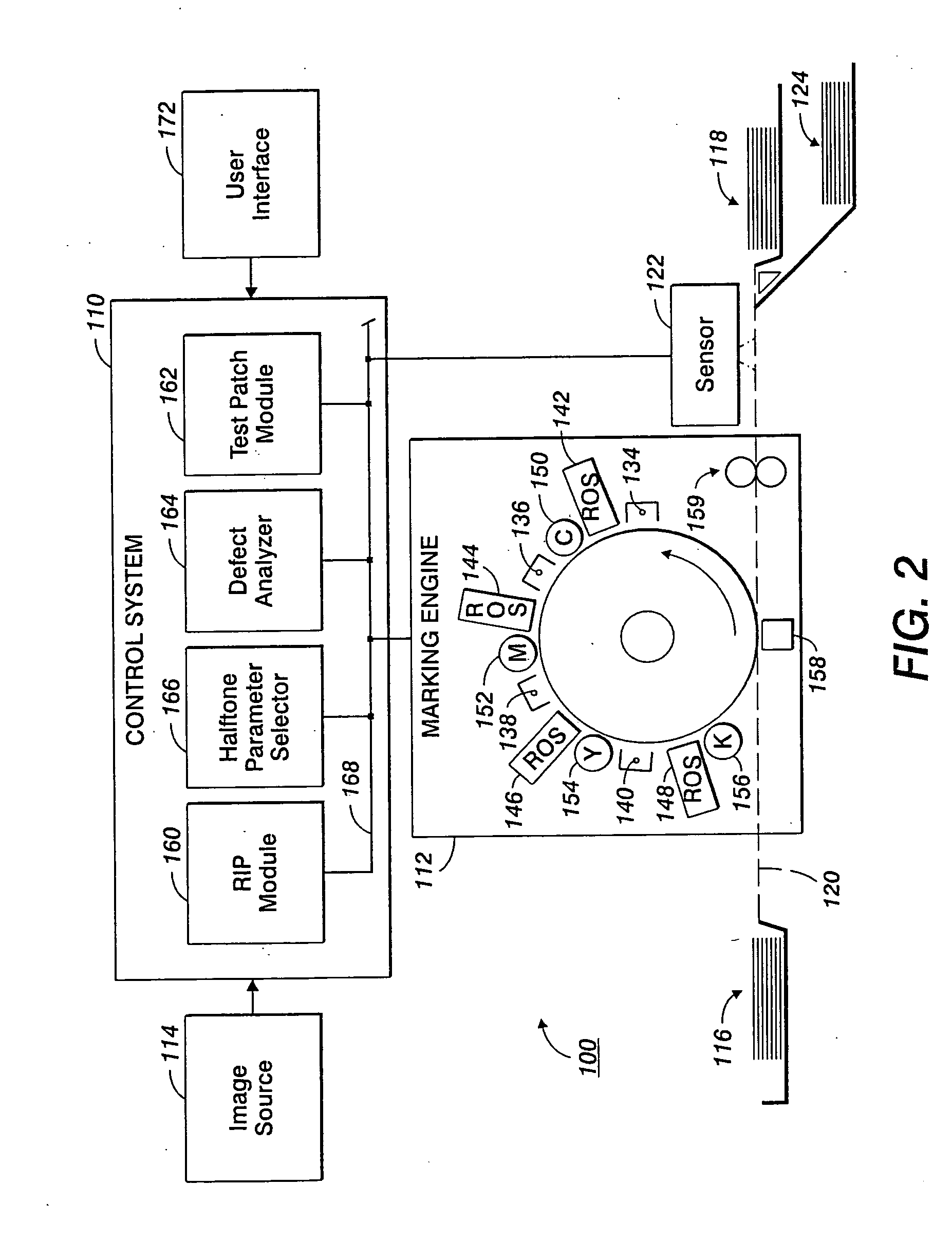System for masking print defects
a print defect and masking technology, applied in the field of printing systems, can solve the problems of high computational cost of such correction methods, image non-uniformity in the output image of digital imaging devices, visible objectionable print defects,
- Summary
- Abstract
- Description
- Claims
- Application Information
AI Technical Summary
Benefits of technology
Problems solved by technology
Method used
Image
Examples
Embodiment Construction
[0021] The exemplary embodiment relates to a system and a method for reducing print non-uniformity in printed images which give rise to visibly objectionable print defects in the image.
[0022] In one aspect, a method of printing includes determining a defect state of a printing system, selecting a screen with a halftone print parameter which masks the defect, and printing images according to the selected halftone print parameter.
[0023] In another aspect, a method includes determining a defect state of a printing system and selecting a marking engine from a plurality of marking engines which masks the defect, and printing images on that marking engine.
[0024] In another aspect, a printing system includes at least one marking engine, which renders images on print media, and a sensor which senses print defects on printed media. A control system is configured for receiving print defect data from the sensor and selecting a screen with one or more halftone print parameter for masking the...
PUM
 Login to View More
Login to View More Abstract
Description
Claims
Application Information
 Login to View More
Login to View More - R&D
- Intellectual Property
- Life Sciences
- Materials
- Tech Scout
- Unparalleled Data Quality
- Higher Quality Content
- 60% Fewer Hallucinations
Browse by: Latest US Patents, China's latest patents, Technical Efficacy Thesaurus, Application Domain, Technology Topic, Popular Technical Reports.
© 2025 PatSnap. All rights reserved.Legal|Privacy policy|Modern Slavery Act Transparency Statement|Sitemap|About US| Contact US: help@patsnap.com



